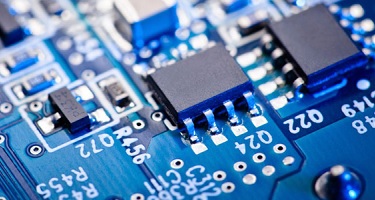Circuits and Electronics

6.002 is designed to serve as a first course in an undergraduate electrical engineering (EE), or electrical engineering and computer science (EECS) curriculum. At MIT, 6.002 is in the core of department subjects required for all undergraduates in EECS. The course introduces the fundamentals of the lumped circuit abstraction. Topics covered include: resistive elements and networks; independent and dependent sources; switches and MOS transistors; digital abstraction; amplifiers; energy storage elements; dynamics of first- and second-order networks; design in the time and frequency domains; and analog and digital circuits and applications. Design and lab exercises are also significant components of the course. 6.002 is worth 4 Engineering Design Points. The 6.002 content was created collaboratively by Profs. Anant Agarwal and Jeffrey H. Lang. The course uses the required textbook Foundations of Analog and Digital Electronic Circuits. Agarwal, Anant, and Jeffrey H. Lang. San Mateo, CA: Morgan Kaufmann Publishers, Elsevier, July 2005. ISBN: 9781558607354.
Course Features
- Lectures 24
- Quizzes 0
- Duration 4 hours per week
- Skill level
- Language English
- Students 2385
- Certificate No
- Assessments Self
-
Lesson 1
- Lecture 1.1 Introduction and Lumped Abstraction Locked
-
Lesson 2
- Lecture 2.1 Basic Circuit Analysis Method Locked
-
Lesson 3
- Lecture 3.1 The Digital Abstraction Locked
-
Lesson 4
- Lecture 4.1 Inside the Digital Gate Locked
-
Lesson 5
- Lecture 5.1 Nonlinear Analysis Locked
-
Lesson 6
- Lecture 6.1 Incremental Analysis Locked
-
Lesson 7
- Lecture 7.1 Dependent Sources and Amplifiers Locked
-
Lesson 8
- Lecture 8.1 Mosfet Amplifier Large Signal Analysis Locked
-
Lesson 9
- Lecture 9.1 Amplifiers – Small Signal Model Locked
-
Lesson 10
- Lecture 10.1 Small Signal Circuits Locked
-
Lesson 11
- Lecture 11.1 Capacitors and First-Order Systems Locked
-
Lesson 12
- Lecture 12.1 Digital Circuit Speed Locked
-
Lesson 13
- Lecture 13.1 State and Memory Locked
-
Lesson 14
- Lecture 14.1 Second-Order Systems Locked
-
Lesson 15
- Lecture 15.1 Sinusoidal Steady State Locked
-
Lesson 16
- Lecture 16.1 The Impedance Model Locked
-
Lesson 17
- Lecture 17.1 Filters Locked
-
Lesson 18
- Lecture 18.1 The Operational Amplifier Abstraction Locked
-
Lesson 19
- Lecture 19.1 Operational Amplifier Circuits Locked
-
Lesson 20
- Lecture 20.1 Op Amps Positive Feedback Locked
-
Lesson 21
- Lecture 21.1 Energy and Power Locked
-
Lesson 22
- Lecture 22.1 Energy, CMOS Locked
-
Lesson 23
- Lecture 23.1 Violating the Abstraction Barrier Locked
-
Exams
- Lecture 24.1 Exams Locked











